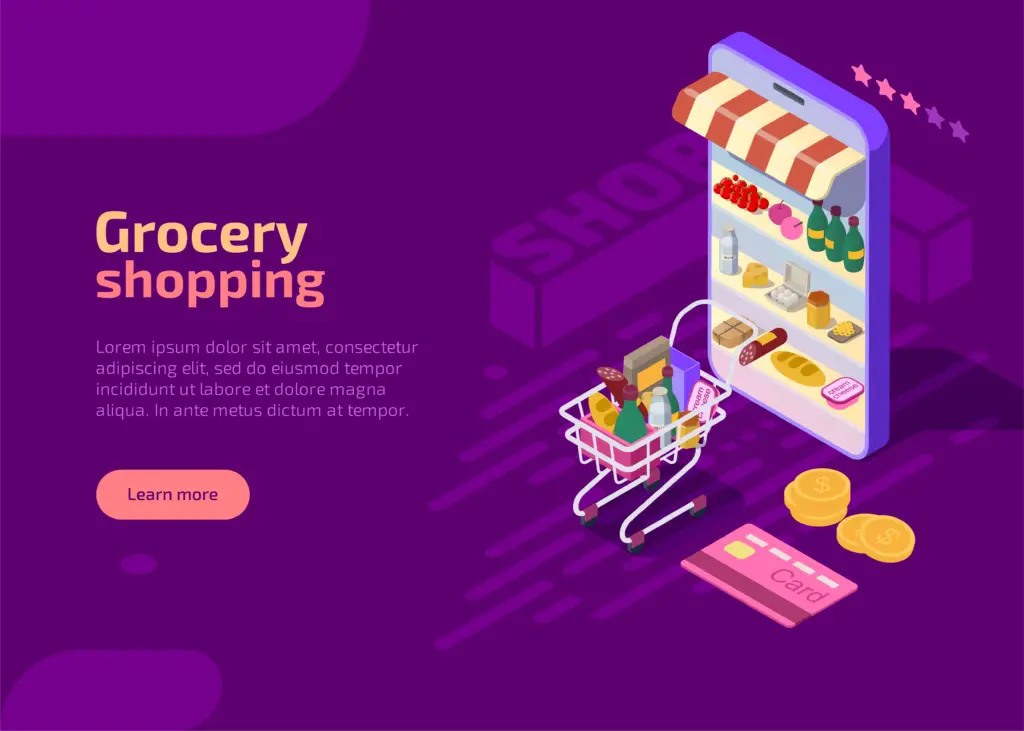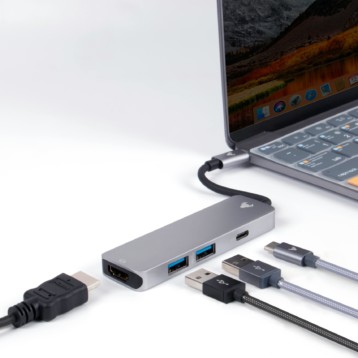
The trust and security of users’ data and transactions are essential for the success of grocery apps and websites. Customers need assurance that their personal information, payment details, and shopping experiences are protected from cyber threats and data breaches. Building a secure and trustworthy platform fosters customer loyalty and confidence in the brand.
This blog digs into the critical aspects of ensuring trust and security in grocery app and website development. From identifying potential risks and best practices for safeguarding user information to compliance with data protection regulations, we provide actionable insights to help businesses create secure and reliable platforms.
Understanding the Risks in Grocery App and Website Development

Common Security Threats in E-commerce Platforms
The digital landscape presents various security challenges, including SQL injections, DDoS attacks, and phishing attempts. Product information management solutions play a crucial role in recognizing these threats, making it vital to implement robust security measures proactively.
Impact of Data Breaches and Hacking Incidents
Data breaches damage a company’s reputation and lead to financial losses and potential legal consequences. Understanding the implications of a breach emphasizes the significance of prioritizing security.
Legal and Regulatory Implications of Mishandling User Data
Non-compliance with data protection laws, such as GDPR and CCPA, can result in hefty fines and legal actions. Staying abreast of relevant regulations ensures businesses adhere to the highest security standards.
Best Practices for Ensuring Trust and Security
Secure User Authentication and Authorization
Executing multi-factor authentication and strong password policies ensures that only authorized users access sensitive data, minimizing the risk of unauthorized access.
Encryption and Data Protection
Encrypting user data at rest and in transit safeguard information from unauthorized access, providing an added layer of security.
Regular Security Audits and Vulnerability Assessments
Frequent security audits help identify vulnerabilities and weaknesses, allowing businesses to address them promptly and prevent potential threats.
Importance of Regular Software Updates
They keep the software, plugins, and frameworks up-to-date and patch known security vulnerabilities, reducing the risk of exploitation.
Payment Gateway Integration and Secure Transactions
Partnering with reputable payment gateways ensures secure and encrypted transactions, instilling confidence in users during checkout.
Building User Trust through Transparency and Communication
Privacy Policy and Terms of Service
A clear and concise privacy policy outlines how user data is collected, processed, and protected. Transparent terms of service foster trust and inform users of their rights and responsibilities.
User Consent and Opt-In Practices
Seeking user consent before collecting and using their data demonstrates respect for their privacy and builds trust.
Educating Users about Security Measures
Informing users about the security measures reassures them that their data and transactions are protected, increasing their confidence in the platform.
Addressing User Concerns and Feedback
Promptly addressing user concerns and feedback shows a commitment to user satisfaction and security, facilitating a positive user experience.
Compliance with Data Protection Regulations
Overview of GDPR, CCPA, and Other Relevant Regulations
Understanding the scope and requirements of data protection regulations like GDPR (General Data Protection Regulation) and CCPA (California Consumer Privacy Act) is crucial for ensuring compliance and protecting user data.
Steps to Ensure Compliance with Data Protection Laws
Compliance is essential to executing data protection measures, appointing a Data Protection Officer (DPO), and establishing data processing agreements with third parties.
User Rights and Consent Management
Entrusting users with control over their data through consent management tools and honoring their rights, such as access and erasure, fosters trust.
Security Testing and Quality Assurance
Importance of Rigorous Testing for Security Flaws
Thorough security testing, including penetration testing and vulnerability scanning, helps identify and resolve potential security weaknesses.
Types of Security Testing
Performing different types of security testing ensures a comprehensive evaluation of the system’s security posture, minimizing vulnerabilities.
Integrating Security Testing into the Development Life Cycle
Incorporating security testing at each stage of development prevents security issues from arising in the final product, enhancing overall security.
Employee Training and Awareness
Role of Employees in Maintaining Security
Educating employees about security best practices and their role in safeguarding user data strengthens the organization’s security posture.
Conducting Security Awareness Training
Regular training sessions and simulations enhance employees’ understanding of security threats and ability to respond effectively.
Establishing a Culture of Security
Fostering a culture of security, where all employees prioritize data protection, creates a robust defense against potential breaches.
Securing Third-Party Integrations and APIs
Risks Associated with Third-Party Services
Vetting third-party providers and ensuring they adhere to rigorous security standards is essential to avoid potential vulnerabilities.
Evaluating the Security of External Integrations
Conducting thorough security assessments of third-party integrations and APIs ensures a seamless and secure user experience.
Implementing Proper Authentication and Access Controls
Enforcing strict access controls and authentication mechanisms restricts unauthorized access to sensitive data through third-party integrations.
Handling and Storing Payment Information
PCI DSS Compliance and Secure Payment Processing
Adhering to Payment Card Industry Data Security Standard (PCI DSS) guidelines secures payment information and protects users from financial fraud.
Tokenization and Encryption of Payment Data
Tokenizing payment data and encrypting sensitive information during storage and transmission enhances payment security.
Trust Seals and Certifications for Safe Transactions
Displaying recognized trust seals and certifications reinforces the platform’s credibility and encourages users to trust their financial transactions.
Incident Response and Disaster Recovery
Developing an Incident Response Plan
Creating a well-defined incident response plan enables quick and efficient action in a security breach.
Strategies for Data Recovery and Business Continuity
Robust data backup and recovery procedures ensure minimal disruption to operations and protect user data during unforeseen incidents.
Communication during Security Breaches
Transparent communication with affected users during security breaches fosters trust and demonstrates accountability.
Customer Testimonials and Reviews on Security Measures
Showcasing Positive Feedback on Security Features
Sharing positive customer experiences and reviews regarding the platform’s security measures reinforces user trust.
Addressing Negative Reviews and Implementing Improvements
Responding constructively to negative reviews and implementing necessary improvements showcases dedication to security and user satisfaction.
Conclusion
Building trust and security in grocery app and website development has become more critical than ever. The foundation of any successful e-commerce platform lies in assuring customers that their data and transactions are protected from potential threats.
This comprehensive exploration of trust and security practices revealed the key elements contributing to a secure and reliable grocery store development. From understanding the risks and complying with data protection regulations to implementing best practices and fostering a culture of security, businesses can create a resilient ecosystem that instills user confidence.
Adopting technology advancements and staying vigilant against evolving security challenges will be paramount as we progress. By continuously refining and adapting security measures, businesses can create a seamless and trustworthy shopping experience for their customers, fostering lasting relationships and driving growth.
Let the knowledge gained from this journey entrust you to build an impenetrable fortress of trust and security around your grocery app or website, establishing your brand as a beacon of reliability and ensuring your users feel safe in every interaction.
Let’s forge a future where trust and security go hand in hand, assigning businesses to thrive in the ever-expanding digital terrain.








